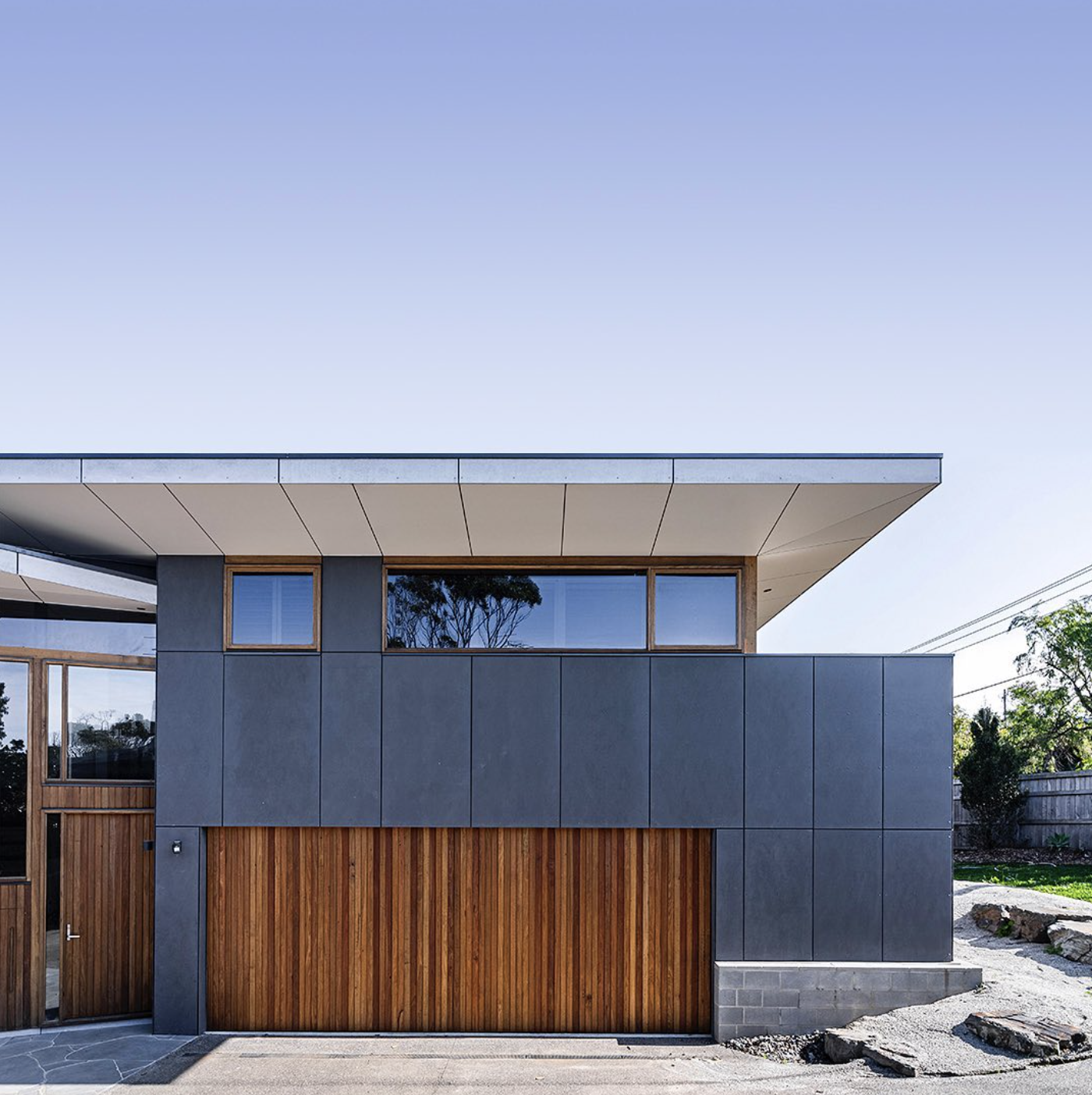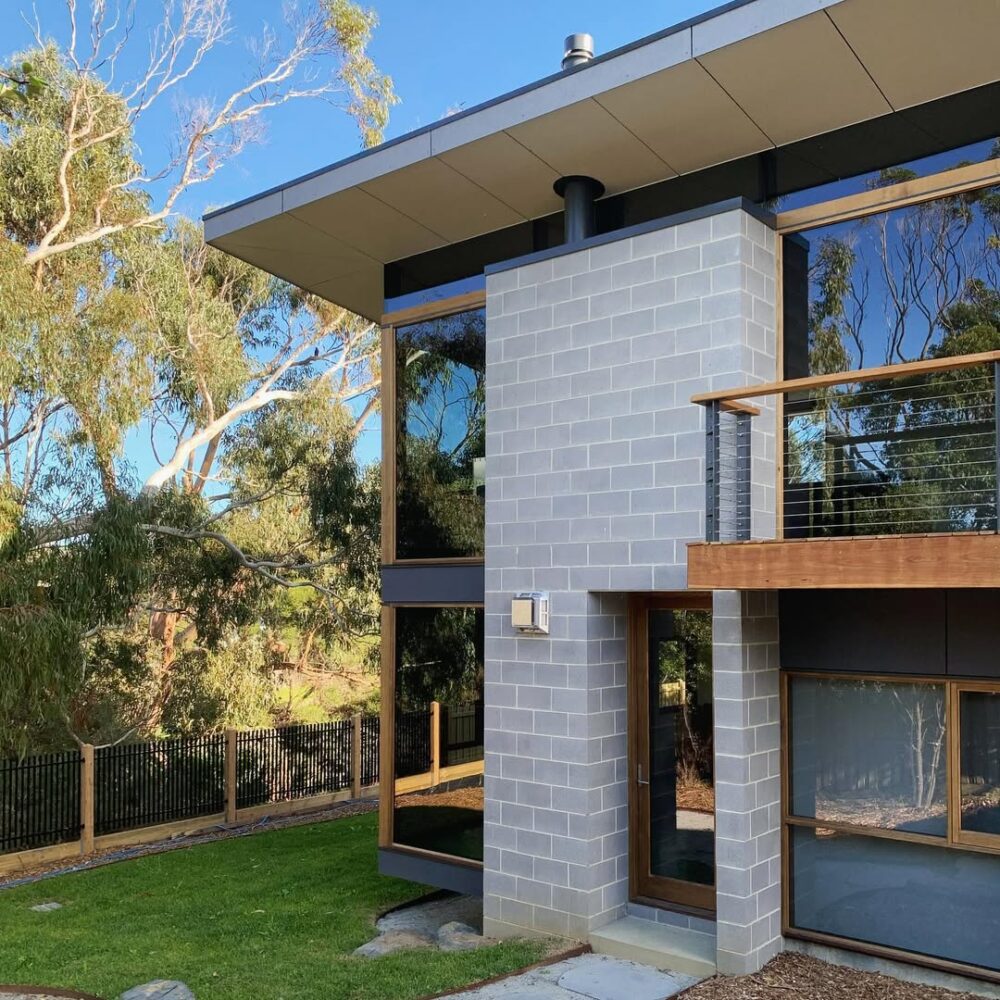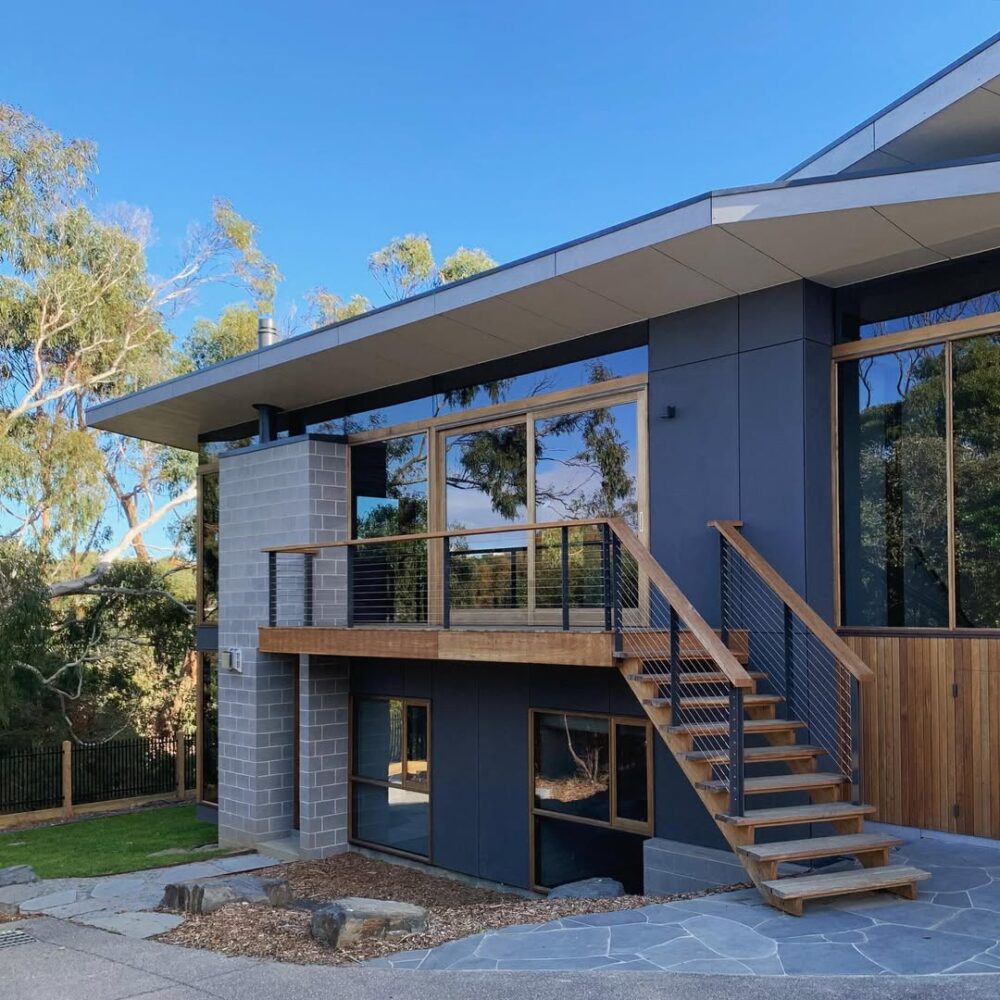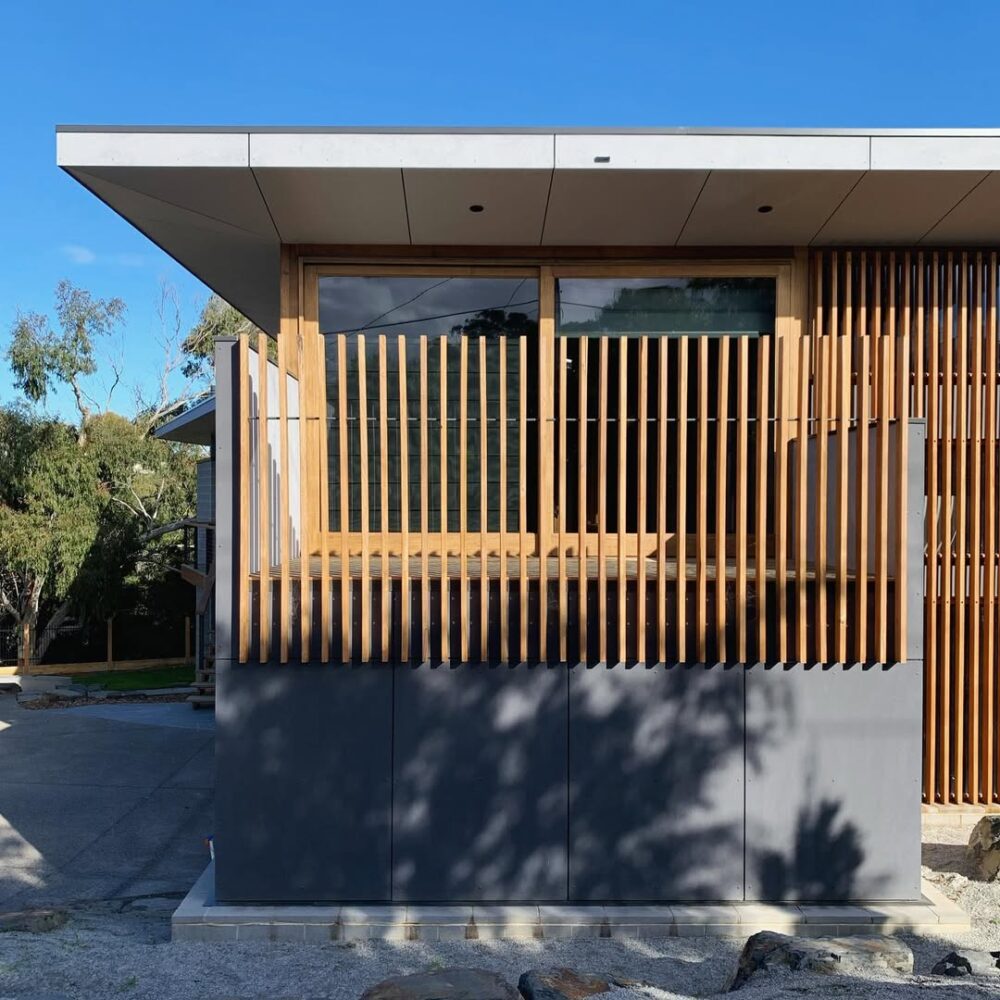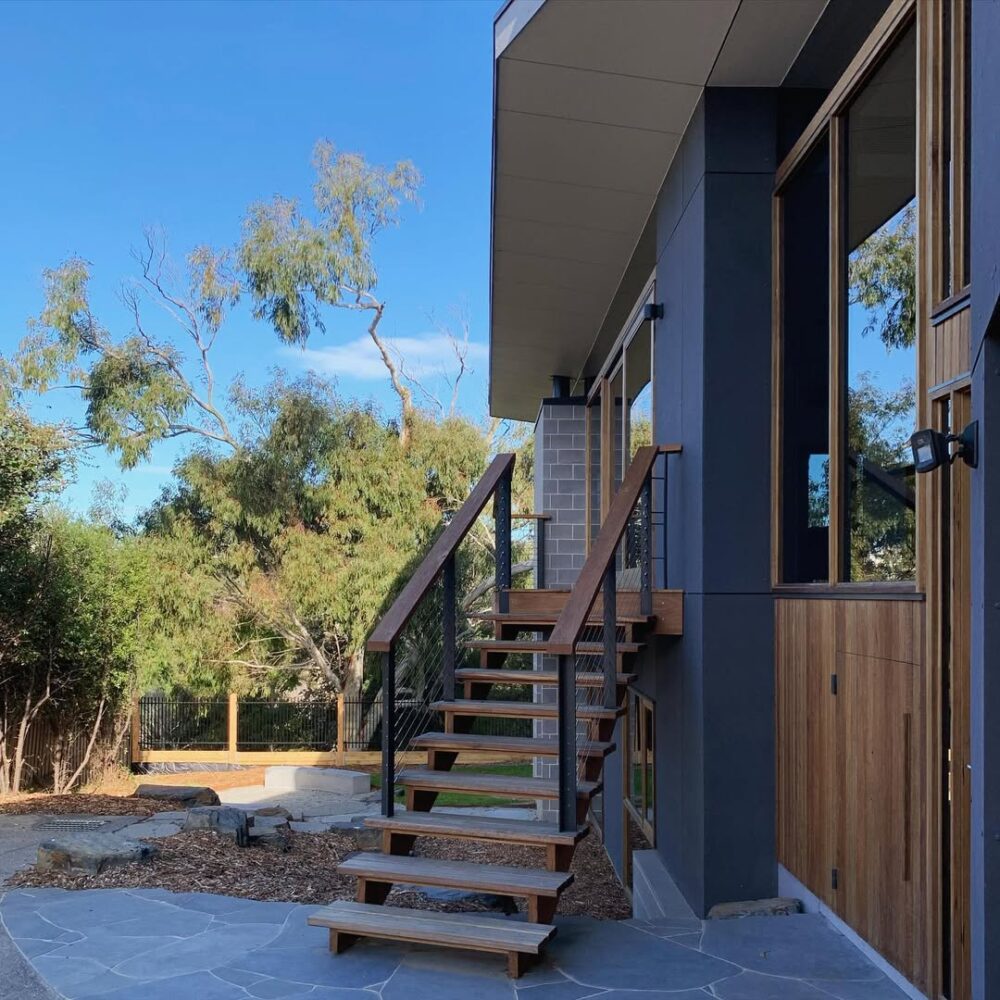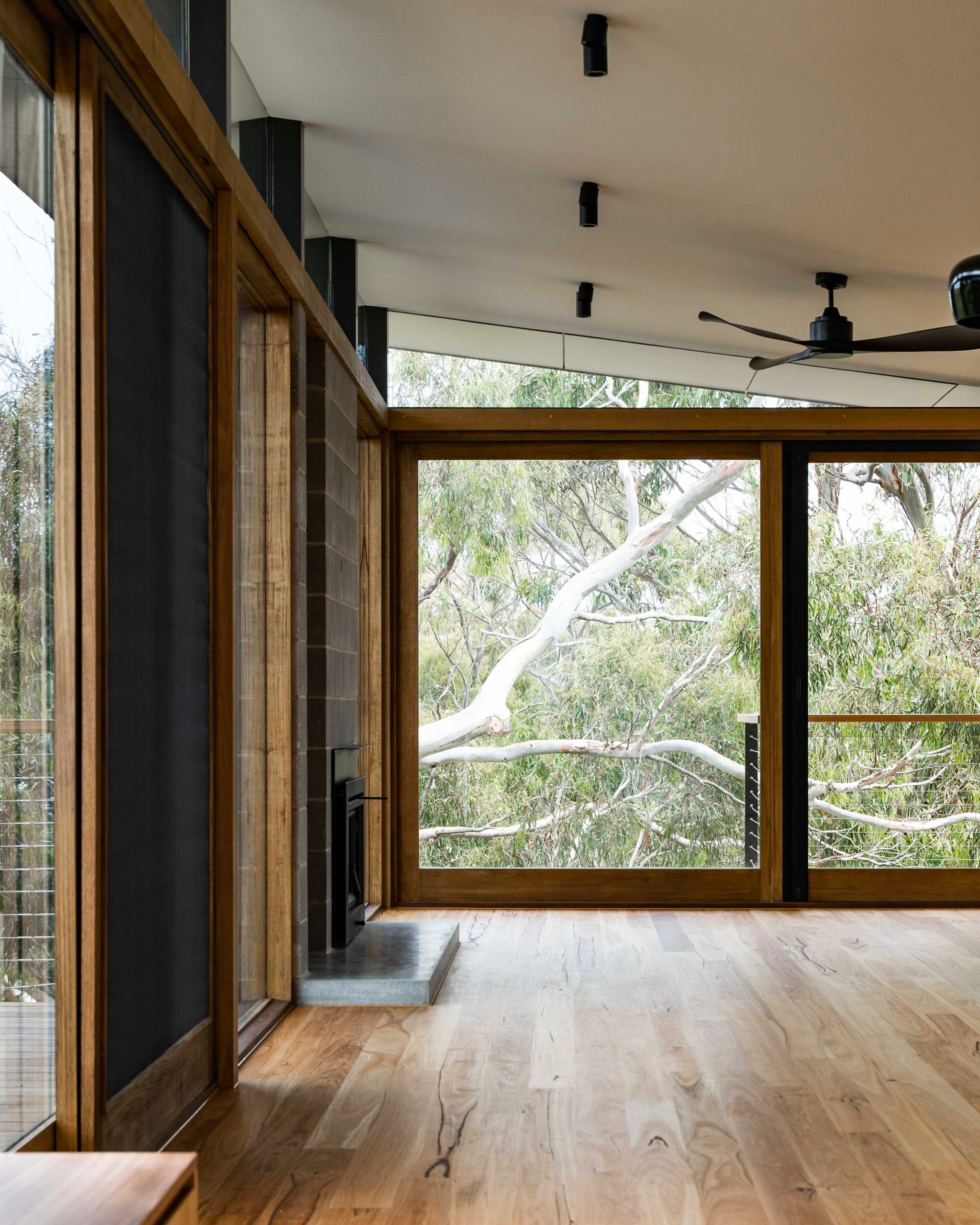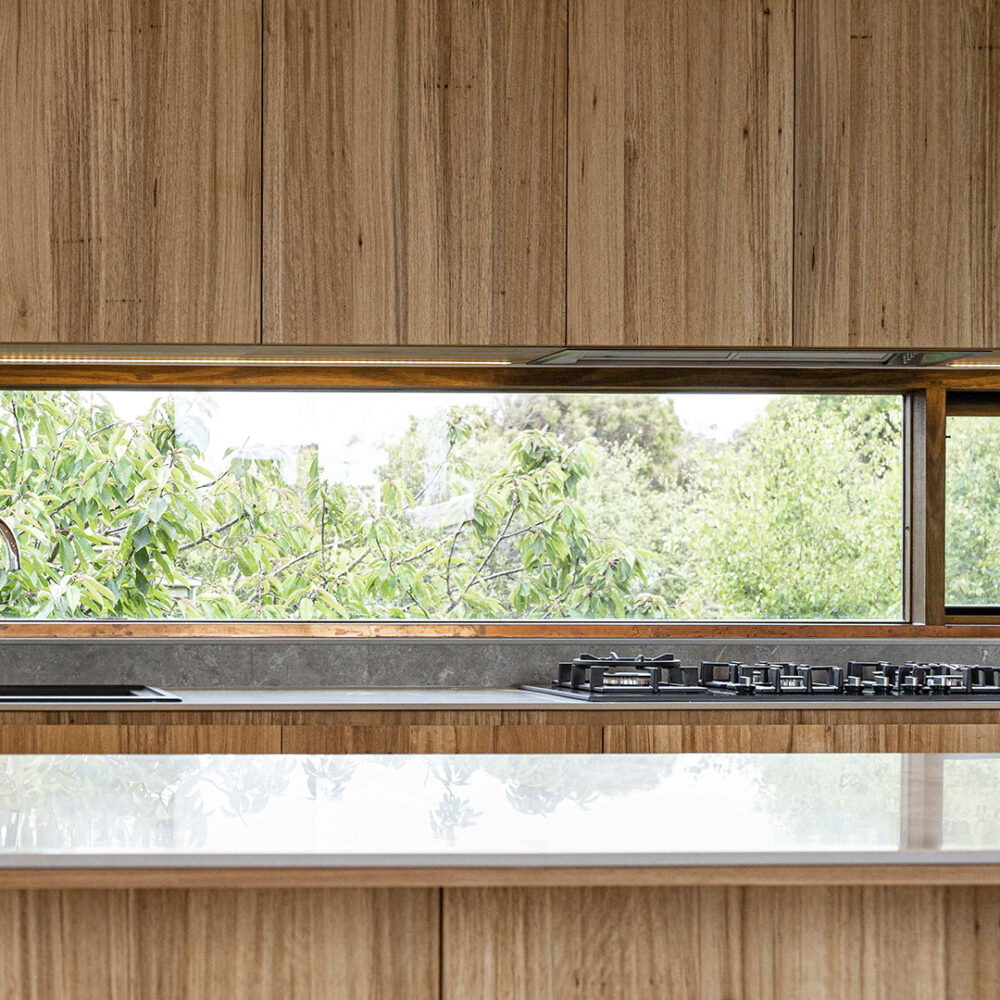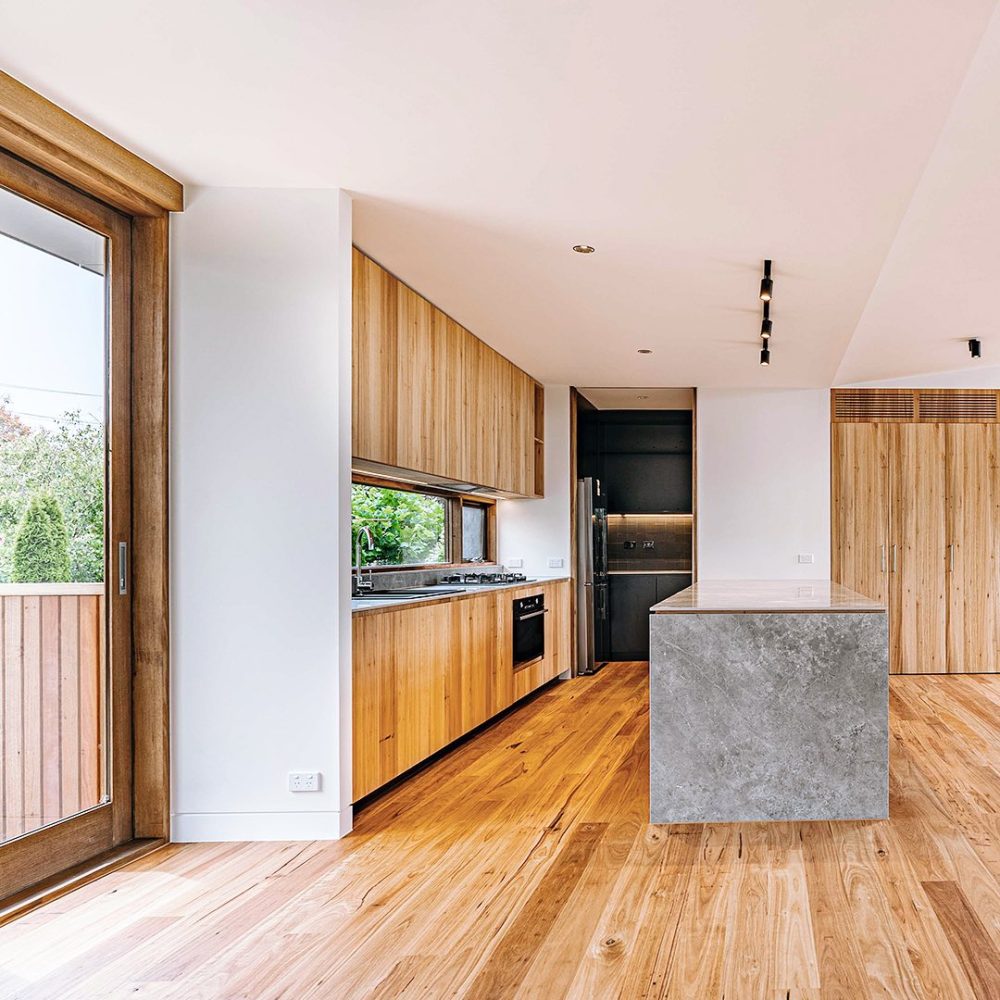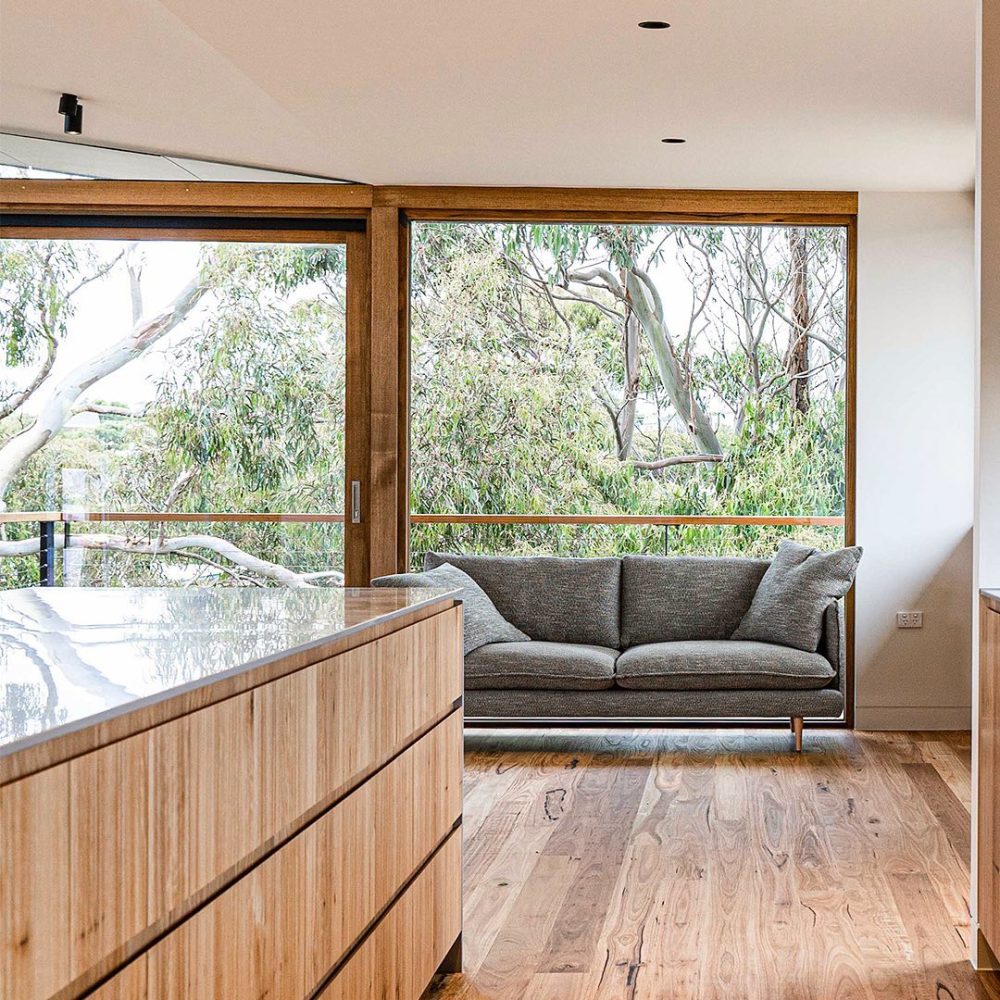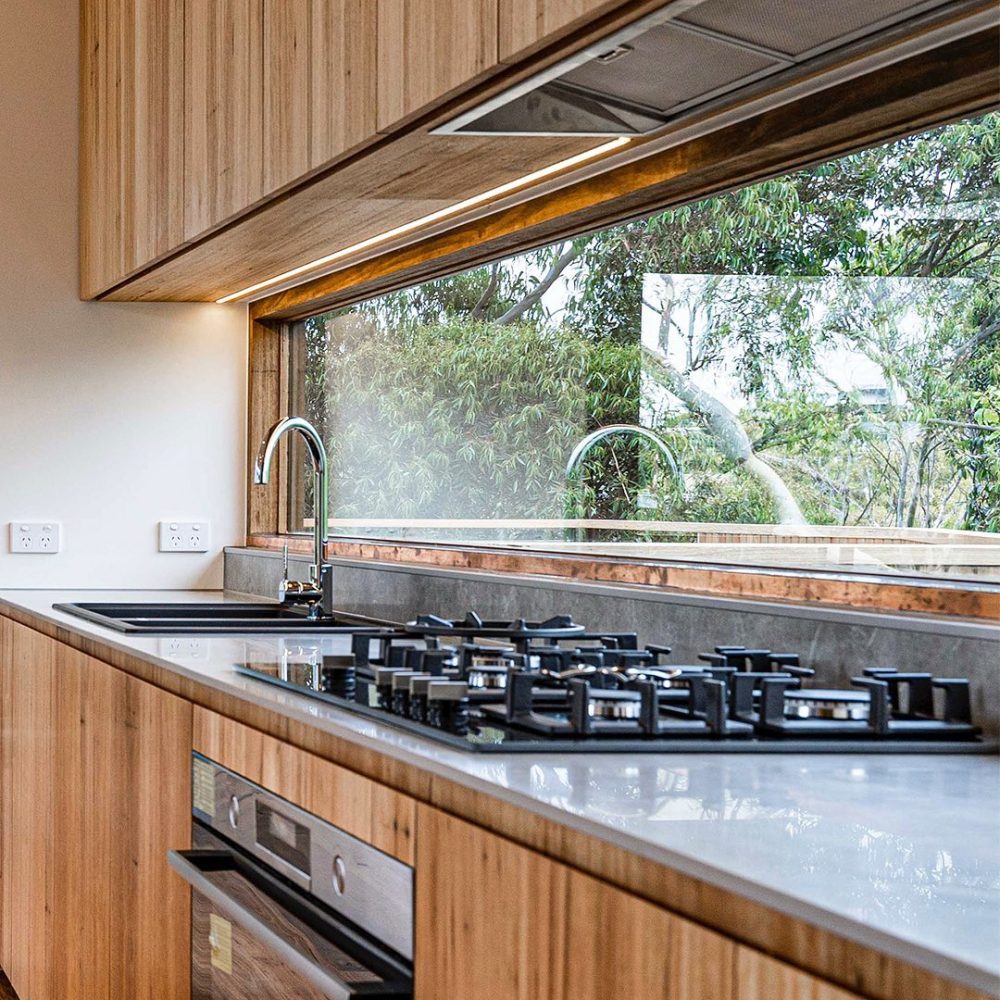House on the Hill
House on the hill
The House on the Hill, Jan Juc, 2020 - 2023
Set high on a coastal ridge in Jan Juc, House on the Hill is quietly embedded in the shifting rhythms of its bushland surrounds. Perched just above the tree line, the home opens itself to distant views while offering a grounded and intimate sense of place. Its form and materiality are designed to sit gently in the landscape — recessive in tone, measured in scale, and considered in every junction.
Living spaces are elevated to the upper level, creating an immersive experience of light, canopy, and sky. Along the eastern façade, a series of highlight windows are shaded by generous eaves, allowing morning light to filter softly through while offering seasonal protection. The long, linear plan opens up to the parkland beyond, where the canopy of native trees frames a borrowed landscape. A quiet moment occurs where the deck steps back from the final glazed panel — a deliberate pause that blurs the boundary between indoors and out.
The living room is anchored by full-height glazing, where reflections of the trees animate the space and connect the interior to the surrounding bushland. The kitchen is positioned to overlook the full extent of the site, its orientation framed by boundary planting that provides privacy without severing the home from its natural context.

Materiality is restrained yet tactile. Floors in solid Blackbutt timber offer warmth and variation underfoot. Joinery throughout the living zones is detailed in Tasmanian timber veneer, lending a richness of tone and craftsmanship. In contrast, honed porcelain benchtops offer a refined surface — durable and understated, with a subtle depth of finish. Every element has been selected with care, balancing the robust with the refined.
The lower level is more contained — providing a quiet retreat, protected from the elements and offering a sense of enclosure. Entry is via a softly stepped landscape, with external finishes and planting integrated to reinforce the house’s relationship with its environment.
Thermal performance and environmental responsiveness are central to the home’s design. The elevated form invites cross ventilation, while double glazing and deep overhangs moderate solar gain throughout the year. Views are captured but never overstated, with the architecture maintaining a calm, recessive posture that allows the setting to take precedence.
This is a home designed not to dominate but to dwell — a place of quiet observation, where everyday living is immersed in the softness of the coastal bush.



